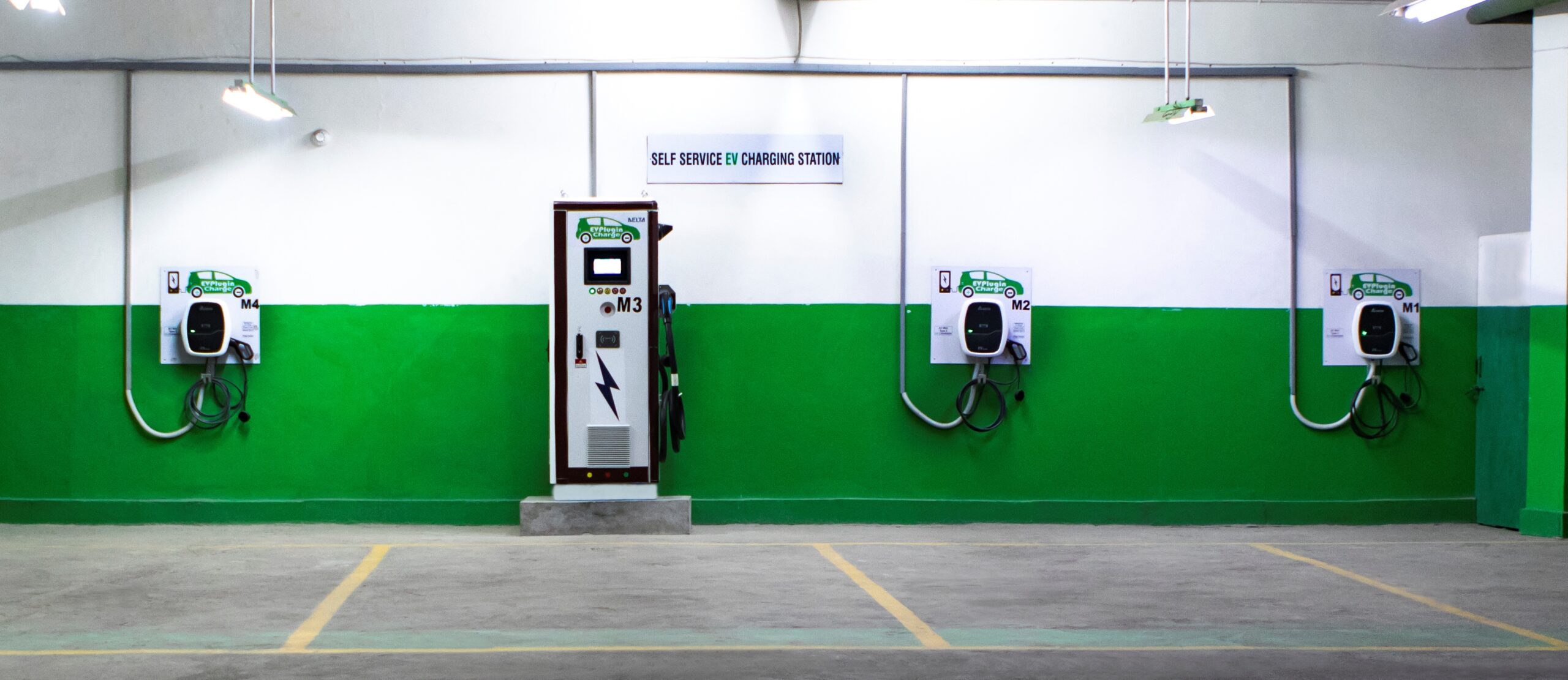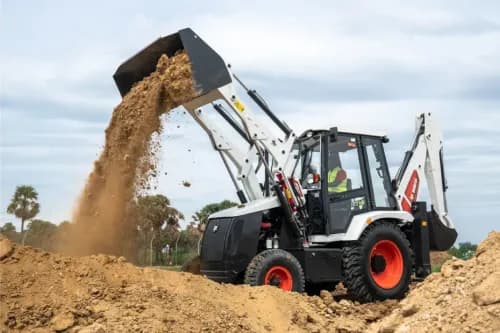Ad
Ad
The Challenges & Opportunities of Electric Vehicle Charging Infra Machines in India
Share
6,534 Views

Posted By Ayushi Gupta on 23-Feb-2024 11:01 AM

Electric Vehicle Charging Infra Machines (EV CIMs) are specialized equipment that can provide charging services to electric vehicles (EVs) in various settings, such as construction sites, industrial zones, and remote areas. EV CIMs include backhoe loaders, cranes, and other heavy-duty machines that are equipped with batteries, chargers, inverters, and connectors. EV CIMs can offer several advantages over conventional plug-in charging stations, such as mobility, versatility, durability, and cost-effectiveness. However, EV CIMs also face some challenges and barriers in India, such as regulatory uncertainty, technical compatibility, safety standards, and consumer awareness. This article is in regard to the opportunities and challenges of EV CIMs in India and suggests some recommendations to promote their adoption and deploymElectric Vehicle Charging Infra Machines (EV CIMs) are specialized equipment that can provide charging services to electric vehicles (EVs) in various settings, such as construction sites, industrial zones, and remote areas. EV CIMs include backhoe loaders, cranes, and other heavy-duty machines that are equipped with batteries, chargers, inverters, and connectors. EV CIMs can offer several advantages over conventional plug-in charging stations, such as mobility, versatility, durability, and cost-effectiveness. However, EV CIMs also face some challenges and barriers in India, such as regulatory uncertainty, technical compatibility, safety standards, and consumer awareness. This article is in regard to the opportunities and challenges of EV CIMs in India and suggests some recommendations to promote their adoption and deployment.Electric Vehicle Charging Infra Machines (EV CIMs) are specialized equipment that can provide charging services to electric vehicles (EVs) in various settings, such as construction sites, industrial zones, and remote areas. EV CIMs include backhoe loaders, cranes, and other heavy-duty machines that are equipped with batteries, chargers, inverters, and connectors. EV CIMs can offer several advantages over conventional plug-in charging stations, such as mobility, versatility, durability, and cost-effectiveness. However, EV CIMs also face some challenges and barriers in India, such as regulatory uncertainty, technical compatibility, safety standards, and consumer awareness. This article is in regard to the opportunities and challenges of EV CIMs in India and suggests some recommendations to promote their adoption and deployment.Electric Vehicle Charging Infra Machines (EV CIMs) are specialized equipment that can provide charging services to electric vehicles (EVs) in various settings, such as construction sites, industrial zones, and remote areas. EV CIMs include backhoe loaders, cranes, and other heavy-duty machines that are equipped with batteries, chargers, inverters, and connectors. EV CIMs can offer several advantages over conventional plug-in charging stations, such as mobility, versatility, durability, and cost-effectiveness. However, EV CIMs also face some challenges and barriers in India, such as regulatory uncertainty, technical compatibility, safety standards, and consumer awareness. This article is in regard to the opportunities and challenges of EV CIMs in India and suggests some recommendations to promote their adoption and deployment.
Electric Vehicle Charging Infra Machines (EV CIMs) are specialized equipment that can provide charging services to electric vehicles (EVs) in various settings, such as construction sites, industrial zones, and remote areas. EV CIMs include backhoe loaders, cranes, and other heavy-duty machines that are equipped with batteries, chargers, inverters, and connectors. EV CIMs can offer several advantages over conventional plug-in charging stations, such as mobility, versatility, durability, and cost-effectiveness. However, EV CIMs also face some challenges and barriers in India, such as regulatory uncertainty, technical compatibility, safety standards, and consumer awareness. This article is in regard to the opportunities and challenges of EV CIMs in India and suggests some recommendations to promote their adoption and deployment.
Opportunities of EV CIMs in India
India has a huge potential market for EVs, as the government aims to achieve 30% EV penetration by 2030 as part of its commitment to improve air quality. According to the NITI Aayog report, India will need about 46,000 public and semi-public charging stations to meet the demand of 8 crore EVs by 2030. However, as of 2024, India has only about 2,000 public charging stations, which is far below the global average of 1 charging station per 6 to 20 EVs. This indicates a huge gap and opportunity for EV charging infrastructure providers in India.
EV CIMs can help bridge this gap by providing charging solutions to EV users in various scenarios, such as:
- Construction sites: EV CIMs can enable the electrification of construction equipment, such as excavators, bulldozers, and dump trucks, which are typically powered by diesel engines. EV CIMs can also provide charging services to other EVs on the site, such as trucks, vans, and cars, which can reduce the fuel costs and emissions of construction activities. EV CIMs can also be used to power other electrical appliances and tools on the site, such as lights, pumps, and drills, which can improve the efficiency and safety of the work.
- Industrial zones: EV CIMs can facilitate the electrification of industrial vehicles, such as forklifts, cranes, and loaders, which are often used for material handling, loading, and unloading. EV CIMs can also provide charging services to other EVs in the industrial zone, such as buses, trucks, and cars, which can reduce the operational costs and environmental impact of the industrial processes. EV CIMs can also be used to power other electrical equipment and machines in the industrial zone, such as generators, compressors, and welders, which can enhance the quality of the work.
- Remote areas: EV CIMs can enable the electrification of rural and off-grid vehicles, such as tractors, motorcycles, and e-rickshaws, which are often used for transportation, agriculture, and livelihood. EV CIMs can also provide charging services to other EVs in remote areas, such as cars, vans, and buses, which can increase the accessibility and mobility of the rural population. EV CIMs can also be used to power other electrical devices and appliances in remote areas, such as lights, fans, and refrigerators, which can improve the standard of living of rural people.
Challenges of EV CIMs in India
While EV CIMs offer many benefits and opportunities, they also face some challenges and barriers in India, such as:
- Regulatory uncertainty: The current regulatory framework for EV charging infrastructure in India is still evolving and needs to be clarified, as different authorities and agencies have different roles and responsibilities. For example, the Ministry of Power (MoP) is responsible for issuing the guidelines and standards for EV charging, the Department of Heavy Industry (DHI) is accountable for providing subsidies and incentives for EV charging, and the state governments are responsible for implementing and enforcing the policies and regulations for EV charging. Moreover, the role and status of EV CIMs as charging service providers need to be more well-defined and recognized, as they may fall under different categories, such as captive, public, or private charging stations. Therefore, EV CIMs may need help in obtaining the necessary permits, approvals, and clearances for their operations and installations.
- Technical compatibility: The current technical standards and specifications for EV charging in India are still being developed and harmonized, as different stakeholders and manufacturers have different preferences and requirements. For example, the MoP has adopted the Bharat Standard for AC charging and the Combined Charging System (CCS) for DC charging, which are based on European standards. However, some EV makers and users may prefer other charging standards, such as CHAdeMO, GB/T, or Tesla, which are based on Japanese, Chinese, or American standards. Moreover, the technical compatibility of EV CIMs with different types of EVs, such as two-wheelers, three-wheelers, four-wheelers, or buses, may vary depending on the battery size, voltage, current, and connector. Therefore, EV CIMs may need help providing charging services to a diverse and heterogeneous EV market in India.
- Safety standards: The current safety standards and norms for EV charging in India are still emerging and improving, as different aspects and issues of EV charging need to be addressed and resolved. For example, the MoP has issued guidelines and specifications for EV charging safety, which cover the electrical, mechanical, and fire safety aspects of EV charging. However, some safety aspects and issues of EV CIMs may need to be adequately covered and addressed by the existing guidelines and specifications, such as the mobility, versatility, durability, and maintenance of EV CIMs. Moreover, the safety awareness and compliance of EV CIMs and their users may vary depending on the location, setting, and scenario of EV charging. Therefore, EV CIMs may face risks and liabilities in ensuring the safety and security of their equipment and services.
Recommendations for EV CIMs in India
To overcome the challenges and barriers and to leverage the opportunities and benefits of EV CIMs in India, some recommendations are suggested such as:
- Regulatory clarity: The government should provide a clear and consistent regulatory framework and guidance for EV CIMs by defining and recognizing their role and status as charging service providers and by streamlining and simplifying the processes and procedures for obtaining the necessary permits, approvals, and clearances for their operations and installations. The government should also provide incentives and support for EV CIMs, such as subsidies, tax benefits, land allocation, and power tariff concessions, to encourage and facilitate their adoption and deployment.
- Technical interoperability: The industry should adopt and follow common and harmonized technical standards and specifications for EV CIMs by aligning and complying with the national and international standards and norms for EV charging and by ensuring the compatibility and interoperability of EV CIMs with different types of EVs, batteries, chargers, inverters, and connectors. The industry should also innovate and improve the technical performance and features of EV CIMs, such as the power output, charging speed, battery capacity, and user interface, to enhance the efficiency and convenience of their services.
- Safety compliance: The EV CIMs and their users should adhere and conform to the safety standards and norms for EV charging by following and implementing the guidelines and specifications for EV charging safety and by addressing and resolving the safety aspects and issues of EV CIMs, such as the mobility, versatility, durability, and maintenance of EV CIMs. The EV CIMs and their users should also raise and promote the safety awareness and compliance of EV charging by educating and training the operators and customers of EV CIMs and by monitoring and reporting the safety incidents and accidents of EV CIMs.
Conclusion
EV CIMs are a promising and potential solution for providing charging services to EVs in various settings, such as construction sites, industrial zones, and remote areas. EV CIMs can offer several advantages over conventional plug-in charging stations, such as mobility, versatility, durability, and cost-effectiveness. However, EV CIMs also face some challenges and barriers in India, such as regulatory uncertainty, technical compatibility, safety standards, and consumer awareness. Therefore, it is important to provide a clear and consistent regulatory framework and guidance, to adopt and follow common and harmonized technical standards and specifications, and to adhere and conform to the safety standards and norms for EV CIMs in India to promote their adoption and deployment.
Ad
News
Top 10 Must-Know Construction Equipment in India
Discover the top 10 must-know construction equipment in India, their features, prices, and benefits to enhance efficiency in your projects....
06-03-2025 05:03 AM
Read Full NewsExcavators in India: Types, Best Models and Their Uses in Construction Sites
Explore excavator types in India, their features uses, and prices. Find the best machine for construction, mining, and infrastructure projects....
11-02-2025 11:02 AM
Read Full Newsbauma CONEXPO INDIA 2024: Shaping the Future of India’s Infrastructure
bauma CONEXPO INDIA 2024 showcases cutting-edge innovations and global collaborations, driving India’s infrastructure growth towards a prosperous future....
06-12-2024 10:12 AM
Read Full News
















